New
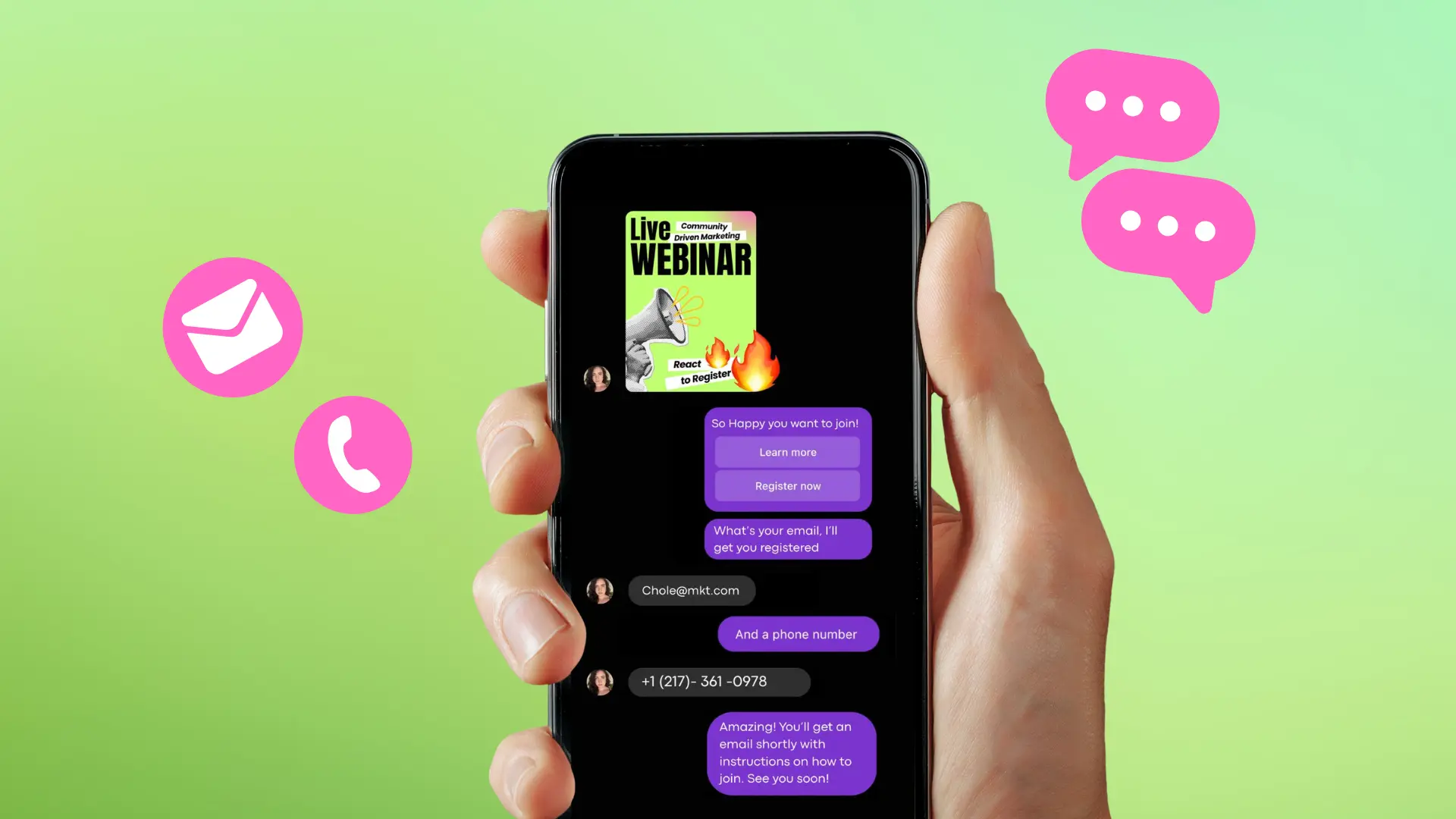
Turn Your DMs Into Lead Gen!
Learn how to collect lead data from your DMs such as email addresses, phone numbers, and more right from your social inbox. If you are not yet automating your DMs your competitors are outpacing you.

How Something Social Saved 75% of Their Time and Increased Revenue by 15%
See how a fast-growing agency improved operations, cut down hours of manual work, and unlocked new revenue opportunities with Vista Social.
New

50 Unique Social Media Ideas for Consistent Content Creation
Discover 50 unique social media post ideas to engage your audience, grow your brand, and maintain a consistent content strategy with ease!
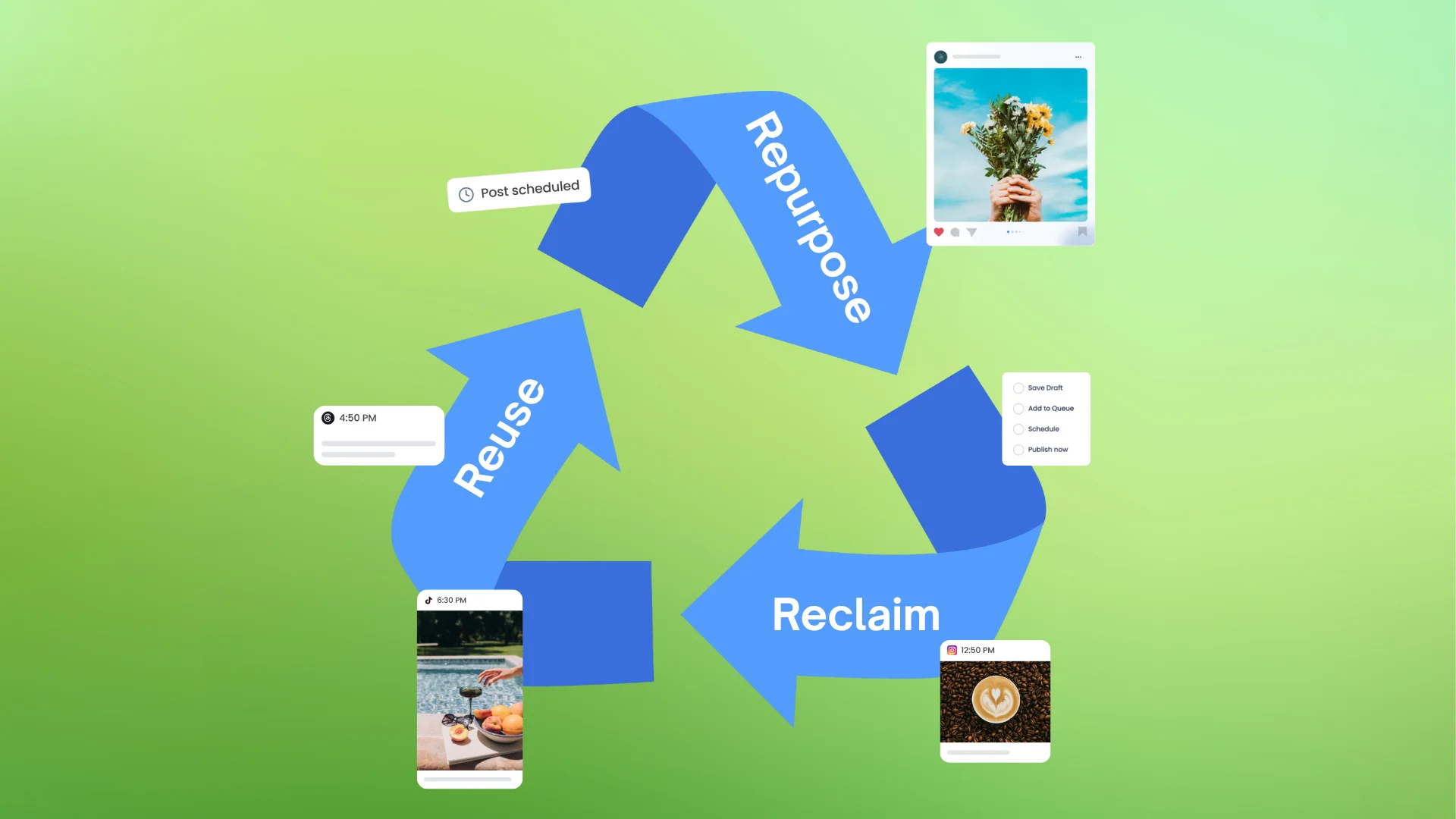
Mastering Content Reuse: The Key to a Consistent and Sustainable Posting Strategy
Published on April 2, 2025
6 min to read
How to Perform Social Media Sentiment Analysis this 2025
Summarize with AI


Table of Content

If you think learning how to perform social media sentiment analysis is daunting, think again.
Reading between the lines of your clients’ likes, comments, and shares helps you uncover what audiences really feel about their brands, which is essential to successful social media marketing.
But here’s the kicker—social media sentiment analysis doesn’t have to be complicated or overwhelming.
You can conduct effective sentiment analysis and gain juicy insights to fuel your social media strategies in a few easy steps.
Don’t believe me?
The guide below gives you all the details.
We’ll break down this seemingly complex task into simple, actionable steps to empower you to perform social media sentiment analysis like a pro.
Let’s dive in.
Table of contents
What you will learn
- Why performing social media sentiment analysis is important
- How to perform social media sentiment analysis: Easy steps and methods
- FAQs on how to perform social media sentiment analysis
- Ready to perform your first social media sentiment analysis?
Why performing social media sentiment analysis is important
The benefits of conducting social media sentiment analysis include the following.
Must read: Social Media Sentiment Analysis vs Social Media Tracking
- Uncover emotional insights. Sentiment analysis allows you to go beyond your clients’ surface-level metrics, such as likes, shares, and even the measure of the overall sentiment. It helps you understand the sentiment behind those interactions—praising your brand, airing frustrations, or feeling neutral
- Improve engagement strategies. Understanding the emotional pulse of your clients’ audiences helps you create content that resonates deeply. When you address their feelings, your posts hit differently, sparking conversations and driving meaningful interactions
- Mitigate crises proactively. Spotting negative sentiment early can save your clients from major PR headaches. Sentiment analysis lets you catch issues before they snowball so that you can respond quickly and with empathy, which fosters trust and brand credibility
- Optimize decision-making. Use sentiment data to tweak your clients’ campaigns, refine messaging, and develop strategies that impact your audience’s emotions
How to perform social media sentiment analysis: Easy steps and methods
Conducting sentiment analysis using your clients’ social media data can be as easy as pie with the steps and strategies below.
Step 1: Set your sentiment analysis goals
Before diving into social media sentiment analysis, determine what you and your clients want to achieve.
Must read: Social Media Sentiment Analysis: A Comprehensive Guide
- Do you want to gauge how their recent campaign resonates with their audiences?
- Do you want to track brand perception and sentiment over time?
- Or are you looking to identify and address potential issues before they escalate?
- Knowing your goals ensures you perform a focused and actionable analysis, saving you from wasting time and energy on irrelevant data.
Step 2: Choose your tools
Many sentiment analysis tools come in all shapes and sizes.
Must read: 20+ Sentiment Analysis Tools for Agencies & Brands for 2025
The right tool can help you effortlessly sift through and analyze vast social media data.
Choose a tool that aligns with your clients and team’s needs, such as social media analytics tools with keyword tracking across various social media platforms, sentiment trend analytics, and in-depth metrics.
The right tool streamlines the process, so you focus more on insights and less on the manual grind.
One such tool is Vista Social.
The all-in-one social media management platform’s toolkit includes essential sentiment analysis features (which we’ll go over later).
Step 3: Identify your keywords
Identify keywords, hashtags, and phrases that align with your clients’ brands or campaigns to get meaningful results.
Include positive terms (“love,” “amazing,” “happy”), negative terms (“hate,” “disappointed,” “bad”), and neutral ones.
Use keywords specific to your client’s brand and track social mentions of their company name, product or service, and even competitors.
Think of these keywords as your net to catch the most relevant conversations.
With Vista Social’s social media listening feature, you can set up Listeners to track conversations across your clients’ connected profiles based on the keywords or phrases you specify.
On your Vista Social dashboard, select Listening.
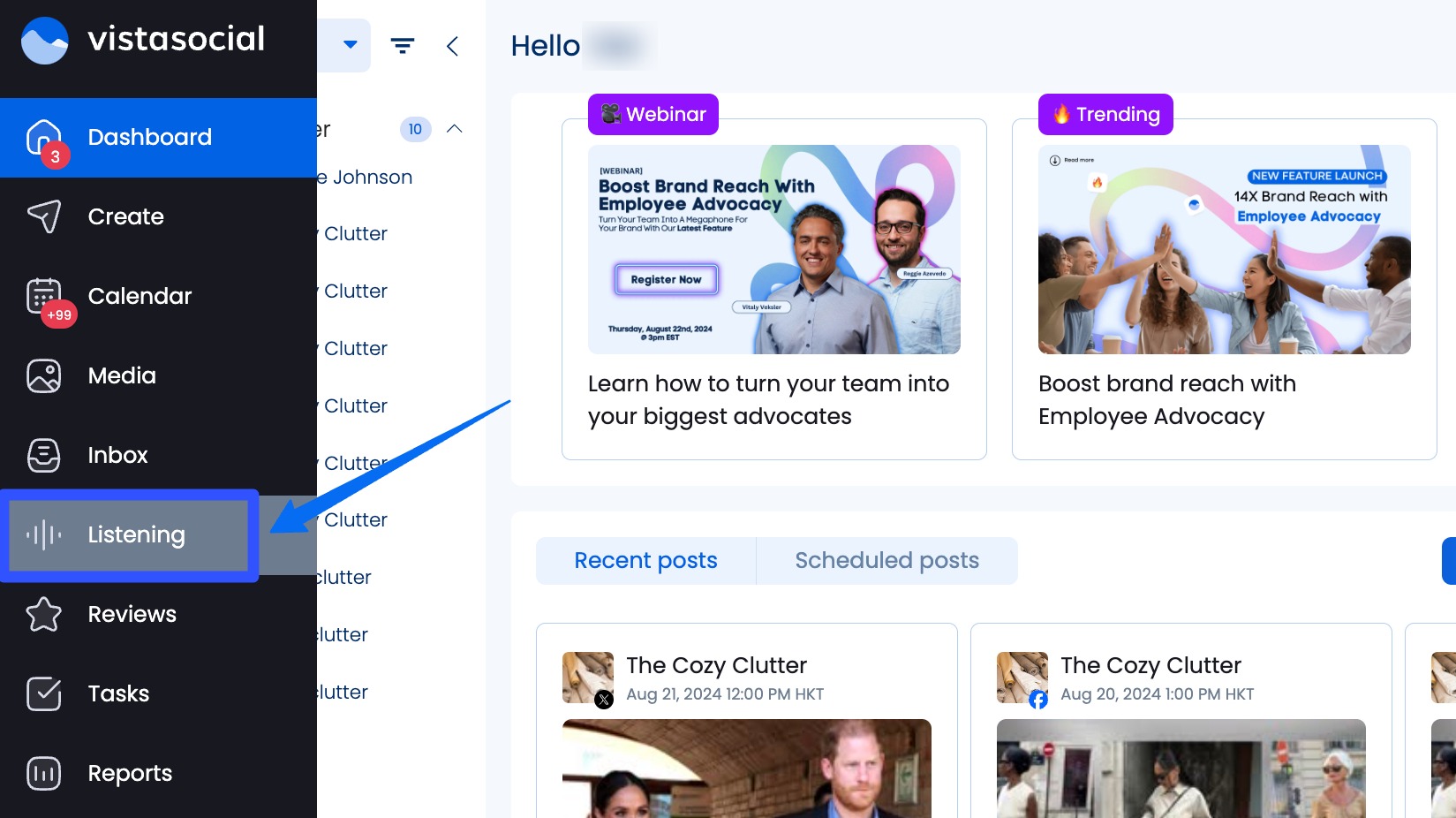
On the Listening page, click the Add listener option.
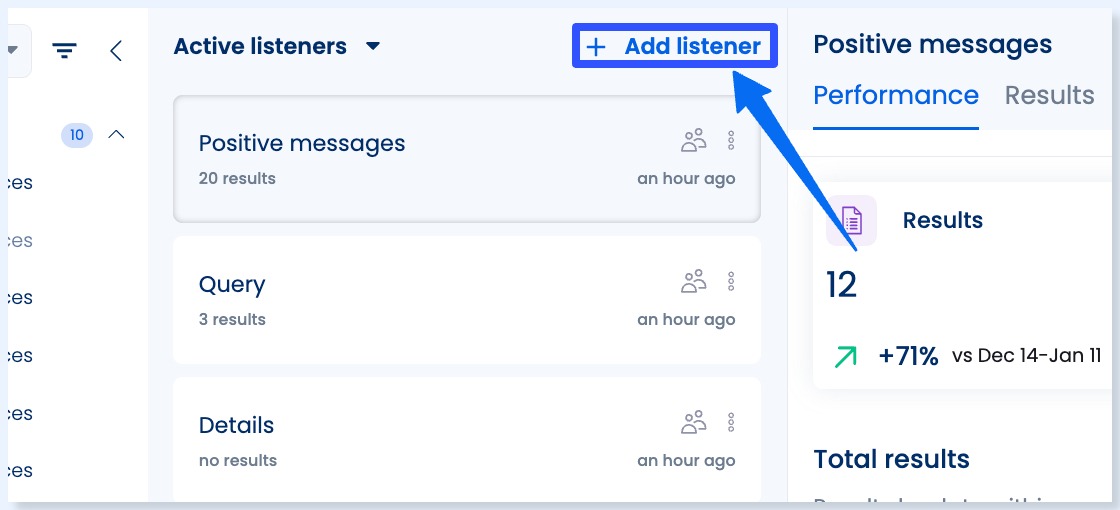
Select whether you want your Listener to “listen” within your clients’ social profiles or across social platforms, the web, or news sites.
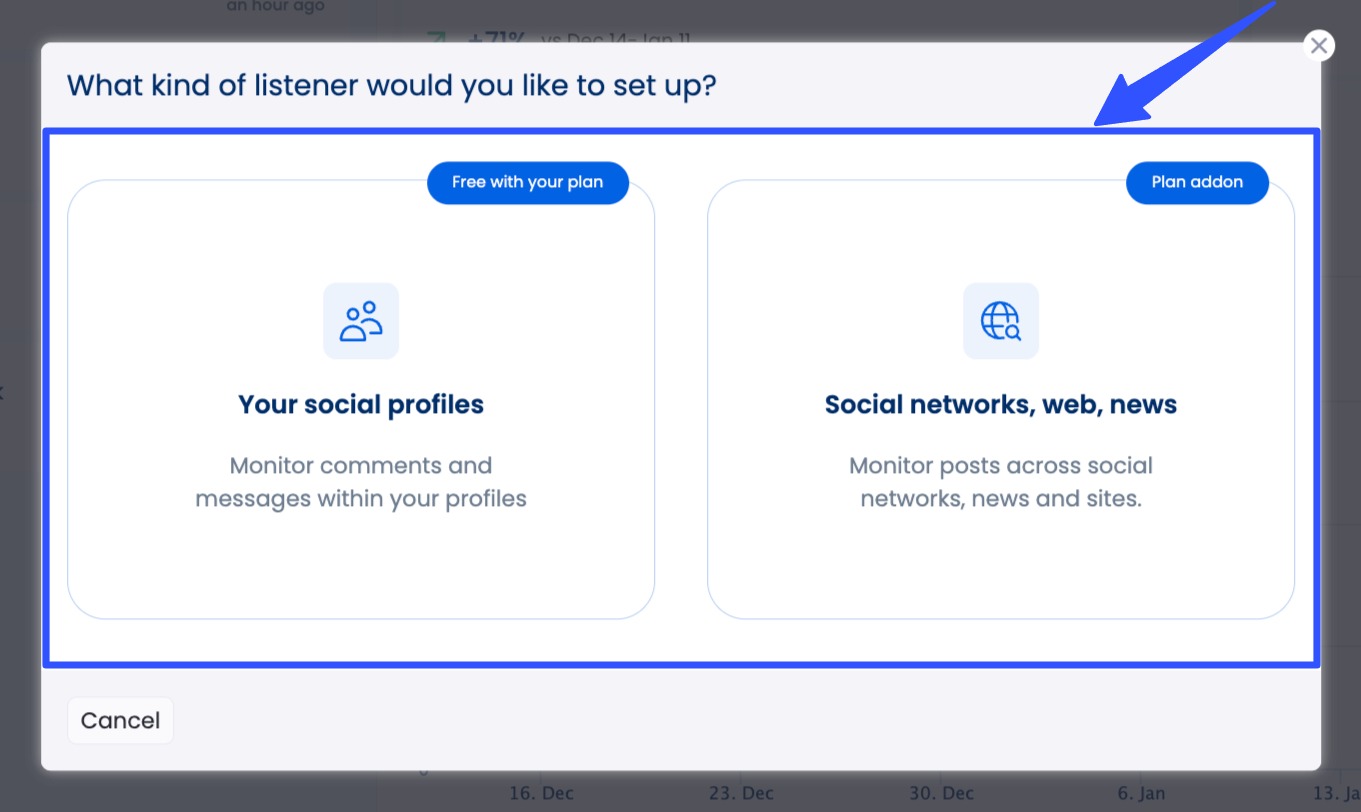
Name your Listener and add a description.
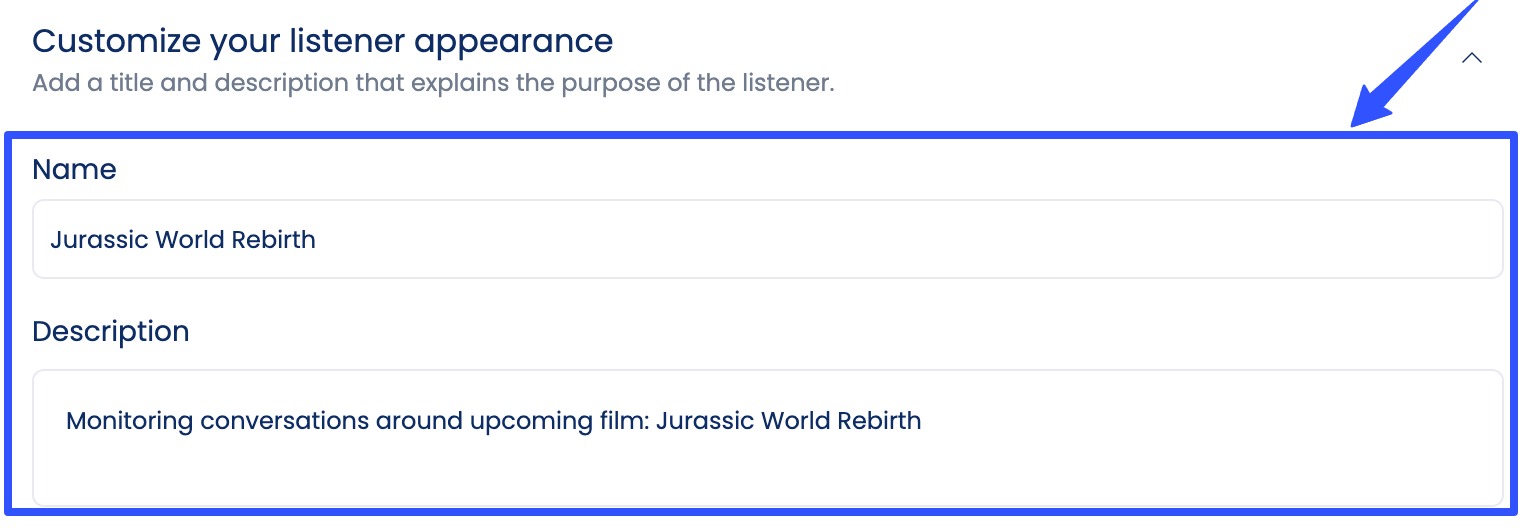
Next, choose your source (the social media platforms from which you want the Listener to track keywords, such as Instagram, Facebook, Bluesky, TikTok, and more.
You can choose more than one source.
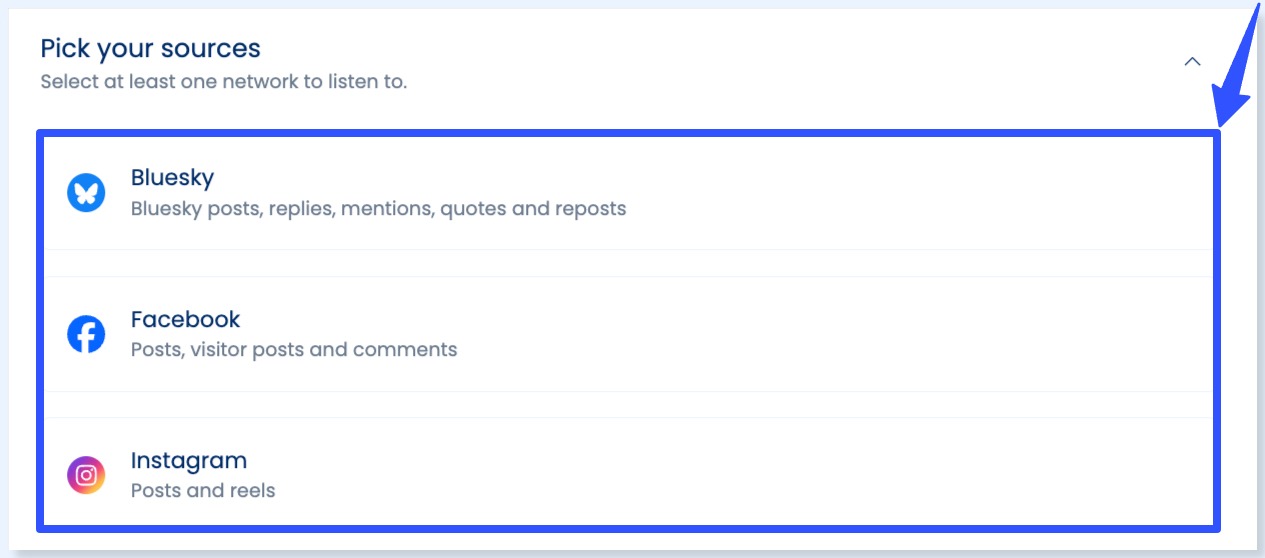
Then, create your query by adding the keywords (words or phrases) you want to track.
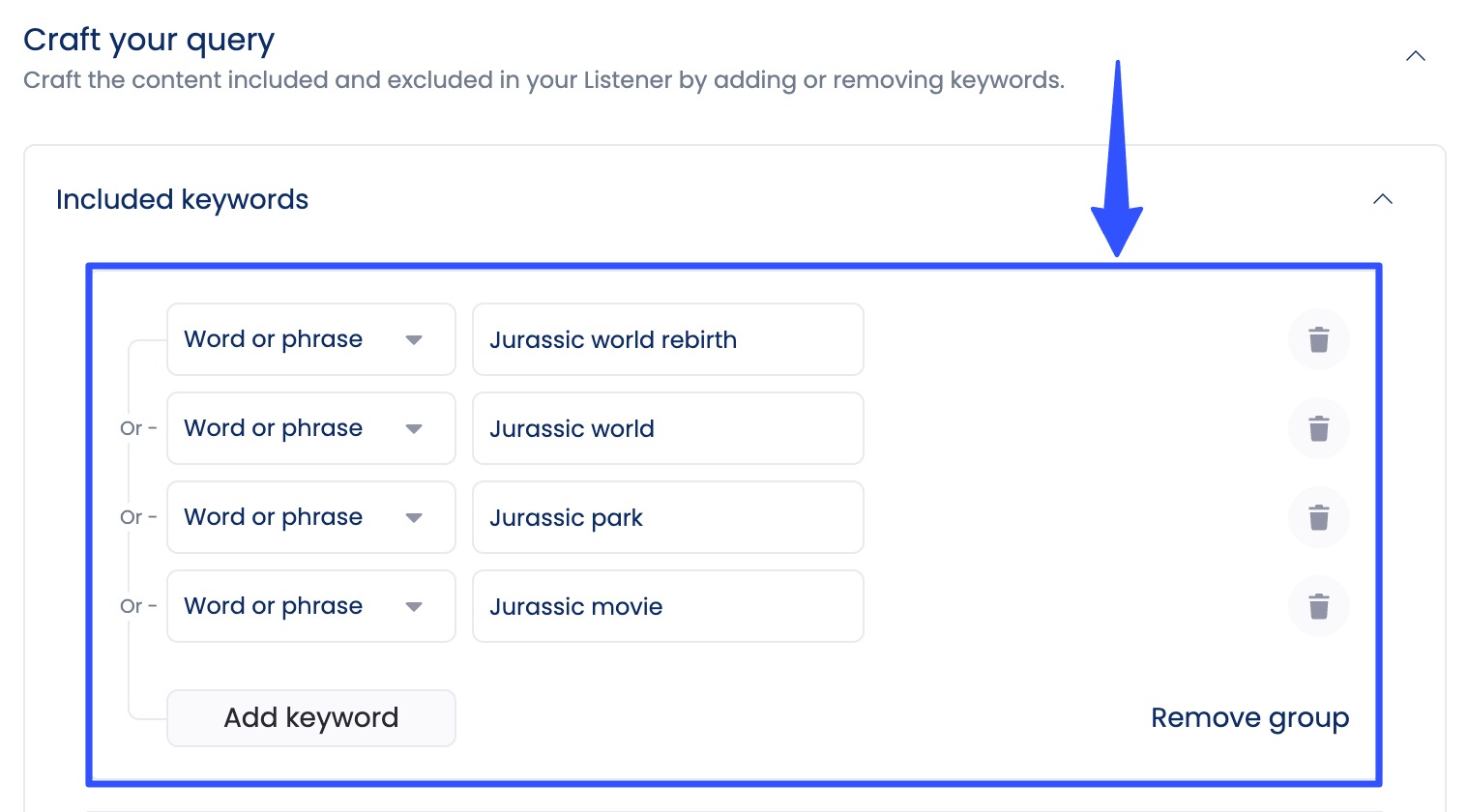
The listening feature lets you choose whether to set your Listener to include all the keywords or exclude results that contain keywords you don’t want by specifying them in the Excluded keywords option.

Once done, your Listener will start pulling results into your Listening dashboard.
Must read: Social Media Sentiment Analysis Dashboard: Tips & FAQs
Step 4: Collect your data
Once your keywords are set, use your tools to gather mentions, tags, comments, reviews, and messages.
In Vista Social, all the conversations pulled by your Listener to your Social Inbox are automatically tagged with a sentiment icon, depending on whether they are positive, neutral, mixed, or negative.
Try Vista Social for Free
A social media management platform that actually helps you grow with easy-to-use content planning, scheduling, engagement and analytics tools.
Get Started NowMust read: Social Media Inbox Management Tools & Tips for 2025
You can also filter the conversations by sentiment.

You’ll see the Listener results and performance, including sentiment insights, such as the percentage of positive sentiment.
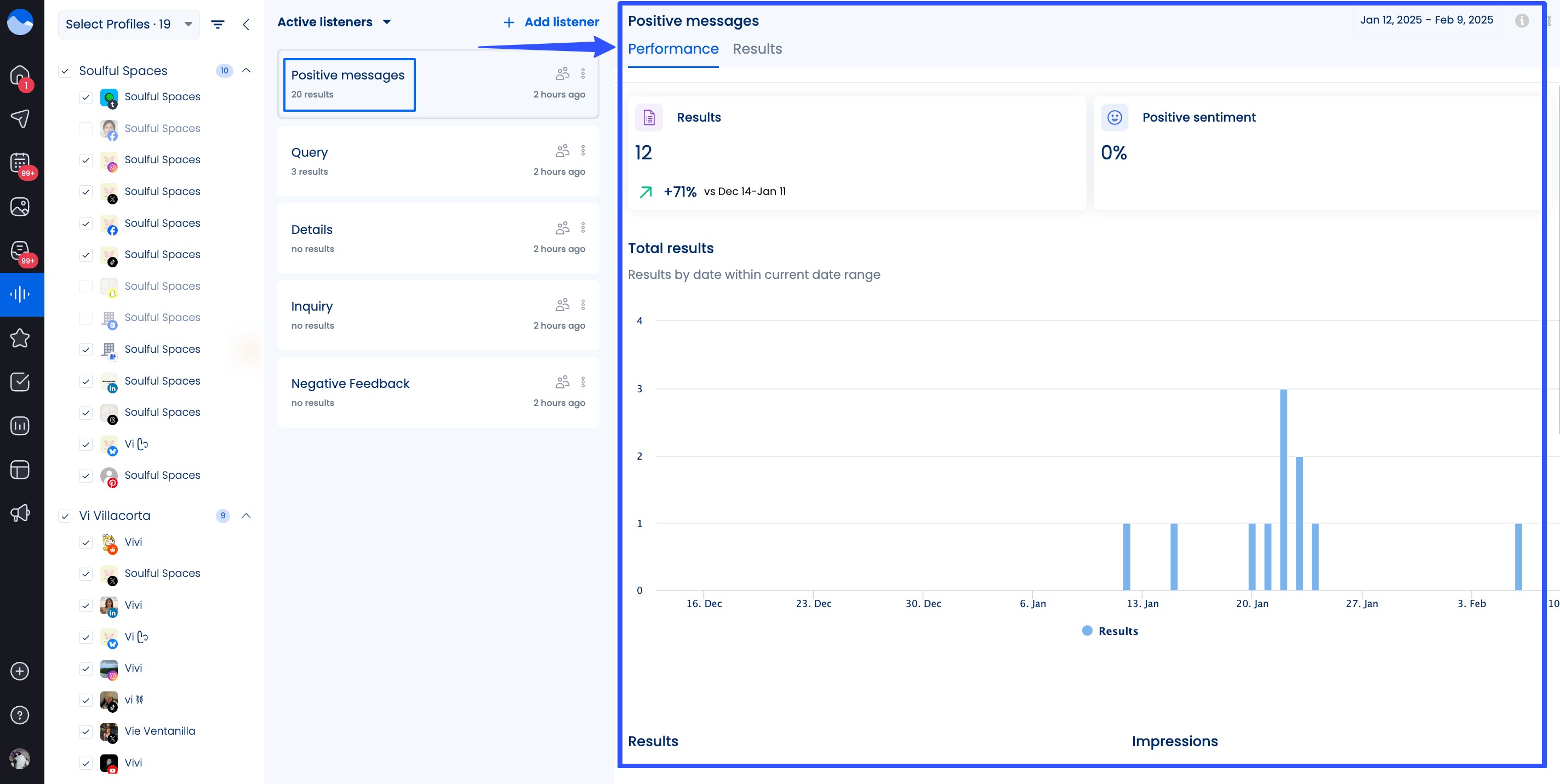
You can specify the date range for the data insights you want to see and export the reports.
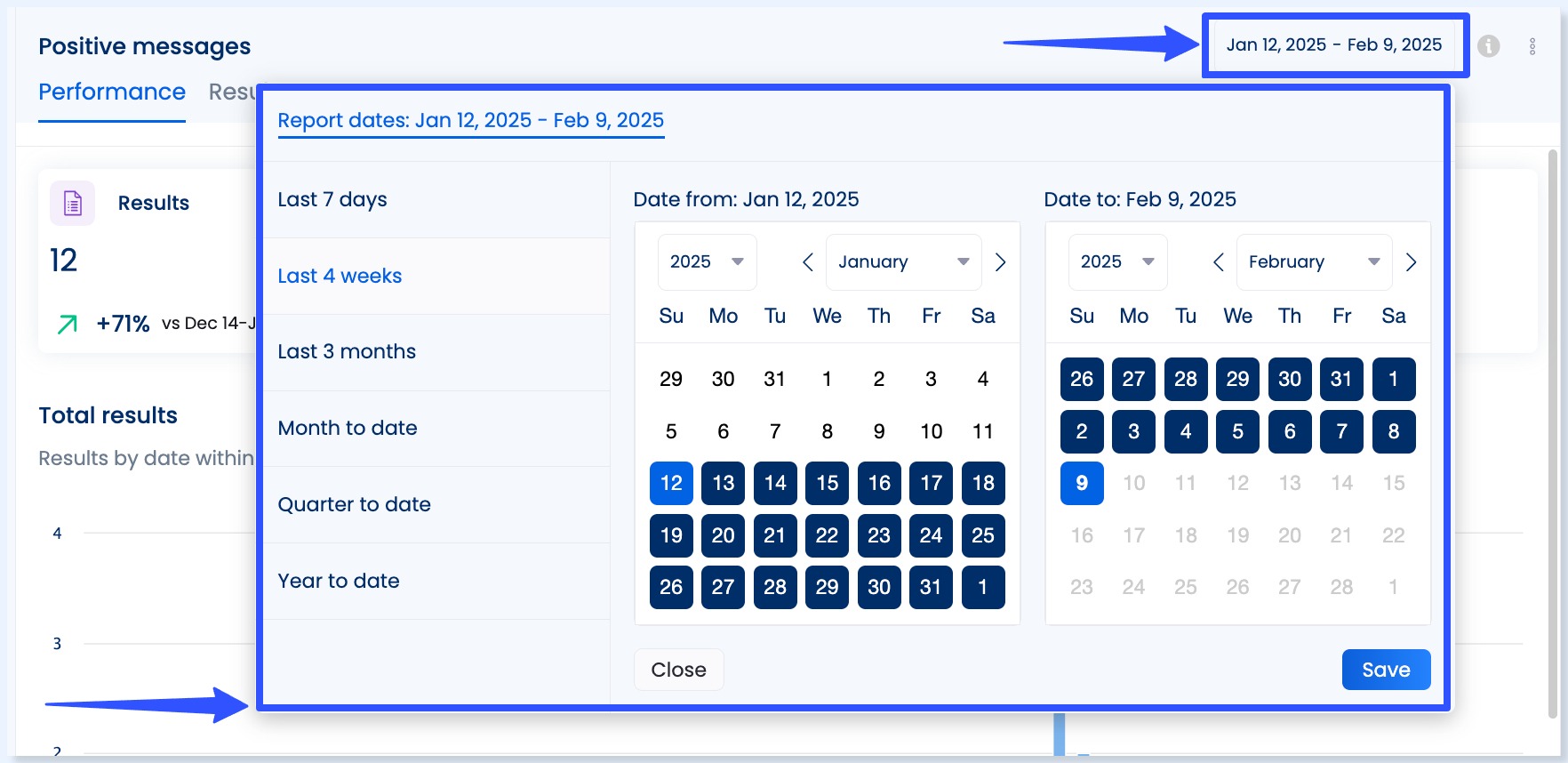
The data can give you a better understanding of how people talk about your clients’ brands.
However, remember that more data isn’t always better; focus on relevance and recent posts to keep your insights fresh and timely.
Step 5: Analyze the sentiment
Look beyond the overall social sentiment score and dive into the specifics of the data and key metrics your analytics tool collected and analyzed.
What words or phrases are driving negative sentiments?
Are there consistent themes in positive mentions?
Understanding the context behind your clients’ brand sentiment can add depth to your analysis.
Vista Social’s sentiment analysis report can help with this.
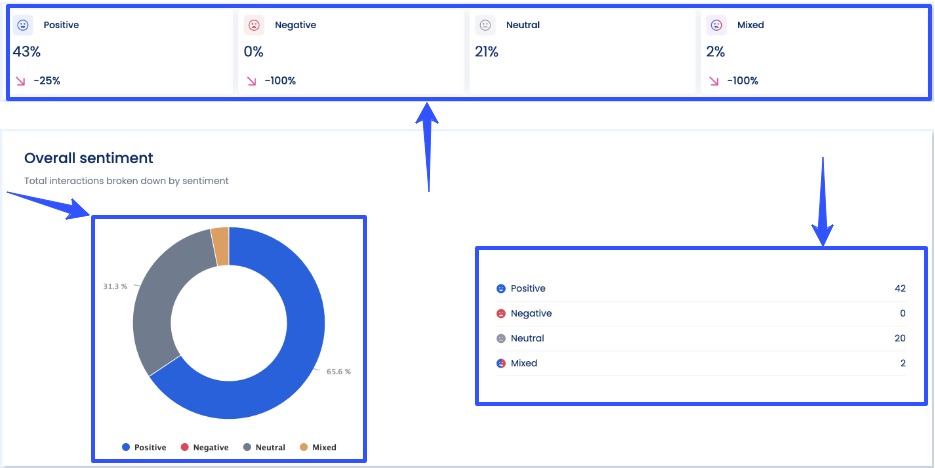
The best part is that you can schedule your sentiment analysis and other social media reports to automatically send to your team members and clients for seamless data sharing and updating.
You can export your reports to CSV or PDF files or share interactive links for quick and easy access.
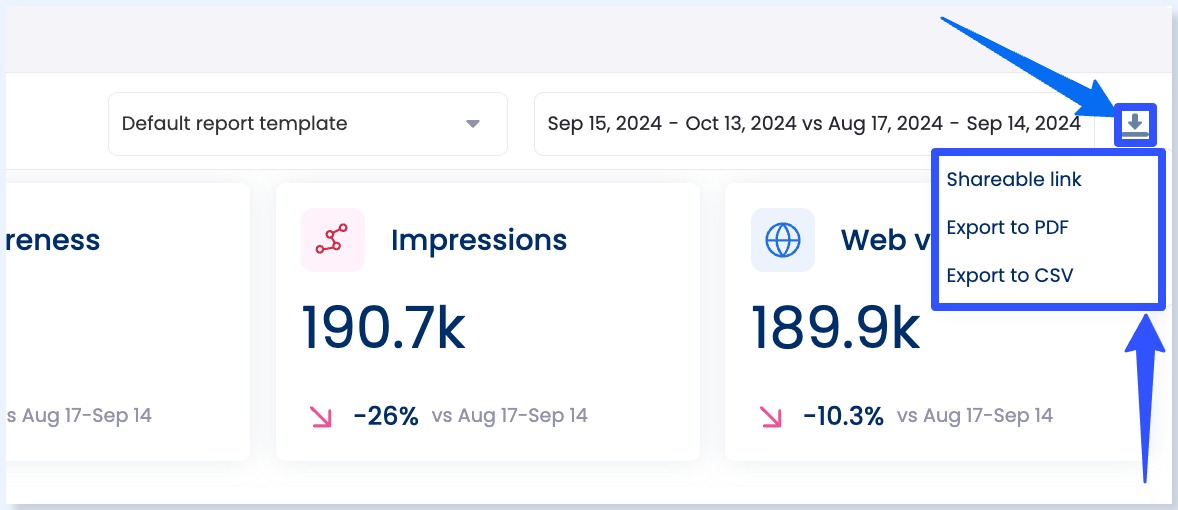
Vista Social also allows you to create custom report templates to help you analyze sentiment further, including other social media data.
Don’t miss out on Vista Social’s other essential features, such as:
- Content calendar
- Optimal posting time suggestions
- Content publishing and scheduling, including bulk publishing and post customization
- Link in bio tool with Vista Page (customizable landing page)
- Review management
- Audience and community management tools
- AI Assistant for instant post description and tagline generation
- Hashtag tools
- Single- or multi-stage approval workflows
- Integrations with many social networks, including BlueSky and Threads
- Employee advocacy
Step 6: Dig deeper
Numbers alone won’t tell the whole story.
When you notice customer sentiment shifts, ask yourself why.
Did a recent post trigger excitement?
Was there a backlash from a particular campaign?
Context is crucial, and digging deeper allows you to interpret data meaningfully, making your extracted sentiment analysis insights more actionable.
Step 7: Take action
Once you have your sentiment data insights, it’s time to act.
Amplify the strategies that work and address the pain points you’ve uncovered.
If you notice negative sentiment around your client’s product, investigate the root cause and communicate a solution.
When positive sentiment spikes around a campaign, replicate that formula.
Insights are only valuable when they drive action and, in turn, your expected results.
Step 8: Monitor consistently
Changes in sentiment can happen overnight.
So, don’t stop at a single analysis.
Regularly tracking sentiment helps you stay in tune with your clients’ audiences’ evolving feelings, including the emotions behind social media comments, mentions, posts, etc.
Adjust your sentiment analysis and social media marketing strategies in real time, and remain agile in a fast-paced digital landscape.
FAQs on how to perform social media sentiment analysis
What are the challenges of social media sentiment analysis?
You can face the following challenges when you run a social media sentiment analysis.
- Context understanding, since tools may misinterpret sarcasm or slang
- Managing large datasets can be overwhelming. You may need to pay more to unlock features such as handling larger datasets and more advanced sentiment analytics tools
- Language nuances and multilingual content can add complexity to your sentiment analysis
How can you improve brand sentiment on social media?
You can help improve social media sentiment toward your clients’ brands with the following tips.
- Engage audiences authentically
- Address negative feedback promptly and professionally
- Create content that resonates emotionally with your target audience
- Track social media trends and adapt your strategies accordingly
How is sentiment analysis different from social listening?
Social listening tools track and understand social media conversations about a brand or topic.
Must read: Social Media Monitoring vs. Social Media Listening
On the other hand, sentiment analysis adds a layer of emotional context, determining if the conversations contain positive, negative, mixed, or neutral sentiment.
Ready to perform your first social media sentiment analysis?
Social media sentiment analysis opens the door to understanding your clients’ audiences on a new level.
By leveraging data-driven insights, you can uncover emotions, preferences, and trends that empower your clients’ brands to build stronger connections with followers and customers.
Remember, successful sentiment analysis combines the best social media tools, strategic thinking, and a focus on the people behind the data. Create your Vista Social account to simplify and supercharge your sentiment analysis and social media management.
About the Author
Content Writer
Jimmy Rodela is a social media and content marketing consultant with over 9 years of experience, with work appearing on sites such as Business.com, Yahoo, SEMRush, and SearchEnginePeople. He specializes in social media, content marketing, SaaS, small business strategy, marketing automation, and content development.
Read with AI
Save time reading this article using your favorite AI tool
Summarize with AI
Never Miss a Trend
Our newsletter is packed with the hottest posts and latest news in social media.

You have many things to do.
Let us help you with social media.
Use our free plan to build momentum for your social media presence.
Or skip ahead and try our paid plan to scale your social media efforts.
P.S. It will be a piece of cake 🍰 with Vista Social
Subscribe to our Newsletter!
To stay updated on the latest and greatest Social Media news. We promise not to spam you!


